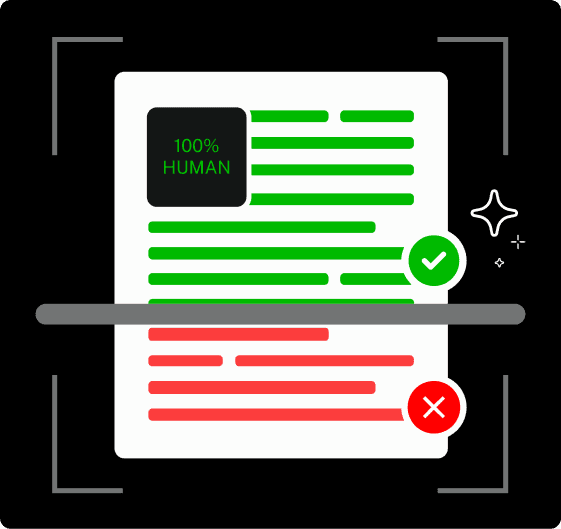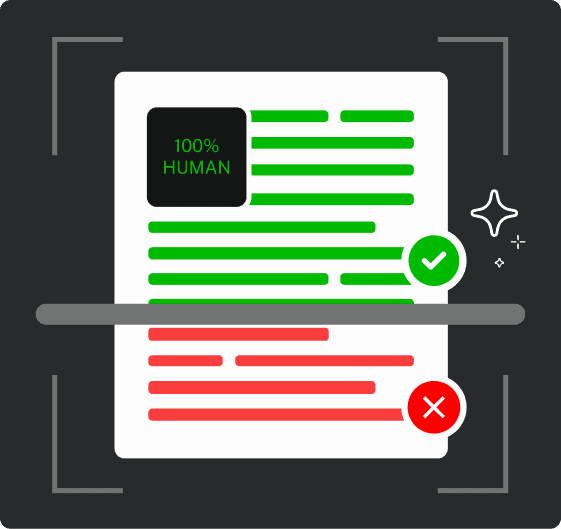So many people think about writing a book at some point, e.g., while reading one and thinking, I could do this, or during a random 2 a.m. burst of inspiration.
But when you actually sit down to write it, the whole thing feels quite scary.
Truth be told, writing a book is a big project, but it’s not impossible. You just need to break it down into smaller, manageable tasks and take it one step at a time.
And in this article, I explain how to write a book starting from finding the right idea, outlining it, building momentum through your first draft, revising without burning out, and choosing the best path to publish it.
Let’s get started.
Finding Your Book Idea
There’s usually a lot of discussion around finding a book idea, and oftentimes, you’ll hear people say, “Just write what you know.”
While it’s not bad advice, the problem with it is that you probably know a lot of things. Things like:
- How to cook
- How to survive a toxic workplace
- And how it felt to move across the country with a cat and a backpack
But which of these experiences will actually form a book?


Never Worry About AI Detecting Your Texts Again. Undetectable AI Can Help You:
- Make your AI assisted writing appear human-like.
- Bypass all major AI detection tools with just one click.
- Use AI safely and confidently in school and work.
A great book idea also doesn’t come like lightning striking at the perfect time. It comes with thinking about all your curiosities and testing them against one critical question:
Would I spend 200 pages writing about this?
You will find the raw material for book ideas in your search history, your rants to friends, the ideas you jot down at 2 a.m., anything you can’t stop thinking about, etc.
Now, once you have broadly brainstormed a few potential ideas, you need to pressure-test them.
Turn to Undetectable AI Chat and ask it to:
- List probing questions to flesh out the concept of your book
- Identify common problems with similar book ideas
- Suggest angles or formats for the book, i.e., memoir, narrative nonfiction, how-to hybrid, etc.
Eventually, you will find an idea that will excite you to move forward.
Planning and Outlining Your Book

Now, you don’t need to write a 40-page beat sheet for your book, but you do need some kind of outline that works for your brain.
If you’re writing nonfiction, identify your central promise, i.e, the change or result the reader will walk away with. Now, map that promise backward.
Each chapter should deliver a step or story that builds toward the transformation.
The best way to outline nonfiction is through a chapter-by-chapter breakdown. Think of potential chapter titles, and under each, write a bullet list of key points, arguments, or stories.
For fiction or memoir, think in terms of the conflict. Who’s your protagonist at the beginning, and who are they by the end? Think about the forces, internal and external, that stand in their way.
You could use the following three-act structure to plan a fiction book:
- Beginning: setup
- Middle: confrontation
- End: resolution
Developing Compelling Characters and Settings
You will have to imagine your characters thoroughly. In addition to their appearances, you must know the following:
- Wants vs. Needs: Think of what your character thinks they want (external goal), and what they actually need to grow (internal goal).
- Backstory: Outline a moment in their past that shaped how they see the world to add depth and vulnerability.
- Core Values: Set the lines they will never cross or the belief system that will drive their decisions
- Contradictions: Real people are full of them. A fearless firefighter who’s terrified of letting people down will be a more interesting character than a generic hero.
As for setting, think about how a particular place affects the characters emotionally. Settings should also interact with the story.
A cramped apartment, for example, can amplify a character’s sense of being trapped.
Writing the First Draft
Now, this is where your real work begins. And let’s be honest, it’s not always fun.
The first draft is where you discover things your outline didn’t tell you. Characters will shift. Dialogue will veer off-script. Entire scenes you thought were essential will collapse under their own weight. And all of it is normal.
You need to accept that your first draft will be ugly, and it’s supposed to be.
During your first draft, your only job is to write forward.
Don’t stop to edit and reread everything you wrote yesterday, and please don’t get caught in the loop of perfecting your opening sentence for the fiftieth time. Just keep moving forward.
Here’s also an unglamorous truth while you’re at your first draft: consistency beats inspiration every time. Waiting until you’re “in the mood to write” is a great way to never finish a book.
Set yourself a daily word count goal and use Undetectable AI’s Word Counter to stay accountable.
Seeing your word count climb steadily over time is wildly motivating.
Revising and Editing Your Manuscript
You’ve finished your first draft. That alone puts you ahead of 90% of people who start writing a book, so take a second to celebrate.
Also, distance yourself from your draft for at least a week or two because for editing, you need fresh eyes and brain.
When you come back at it, start your editing with big-picture revisions first. If you’re not sure how to fix a section, the AI Essay Rewriter from Undetectable AI can save you time and brainpower.
Paste in a rough chapter and let it rewrite with cleaner logic and flow while preserving your voice.
Once your structure is built, you’re in the line-editing phase to tighten sentences and remove filler from your text.
Drop in any sentences that feel awkward or repetitive onto the Undetectable AI Paraphraser and rework them into clearer alternatives.
Reading your manuscript out loud is one of the most effective editing hacks out there.
It highlights unnatural dialogue or overly long sentences that your brain skips over when reading silently.
After everything else is in place, handle grammar, punctuation, spelling, and formatting. It is the most technical part of editing, and yes, you can use Grammarly for it.
But nothing beats a careful, slow read. Or better yet, a second set of human eyes.
Making Your Writing Sound Human and Authentic

Think about how you sound when you’re explaining something you care about to a friend over coffee.
That’s your voice. It has contractions. It breaks rules sometimes. It uses repetition for emphasis.
The problem with AI-assisted drafts or overly edited sections is that they start to sound robotic, i.e., emotionally flat.
If you’ve used AI tools to write or rework parts of your manuscript (which is fine, by the way), you have to re-humanize those sections so your reader stays connected.
To loosen up your tone, try running these sections through Undetectable AI’s AI Humanizer.
Drop in anything that sounds too stiff, and it’ll return a version that sounds like you actually wrote it on a good day.
The Humanizer tool also breaks your text down into sentences of varying length and structure. Human speech isn’t monotone.
We pause, emphasize, break things up, and that’s what makes the readers feel a connection with your writing.
Publishing Your Book: Traditional vs. Self-Publishing
There are two main routes to publishing a book you spent hours writing: traditional publishing and self-publishing.
Traditional publishing
You submit your manuscript to literary agents or publishers. If you land a deal, the publisher buys the rights, pays you an advance, and handles editing, cover design, printing, distribution, and marketing (to some degree).
Being backed by a known publisher can open many doors for you. It’s easier to land into bookstores, media, awards, and reviews. And if your book is accepted, you’ll often get paid before it even hits the shelves.
However, it’s hard to get in. Most agents and publishers reject 90–95% of submissions and when they do accept one, it takes 12-24 months to see your book in print.
Self-publishing
Self-publishing requires you to upload your manuscript to platforms like Amazon Kindle Direct Publishing (KDP), IngramSpark, or Draft2Digital.
It also means you are responsible for your editing, design, formatting, marketing, and pricing, unless you outsource some of it. That, of course, gives you more creative freedom and if your book is ready you can publish it today!
The problem with starting out through self-publishing is that its marketing is on you. Your book won’t sell itself, even if it’s amazing.
So, you might not get a good monetary return initially and will need to learn about the publishing process all by yourself.
Explore our AI Detector and Humanizer effortlessly in the widget below!
FAQs About How to Write a Book
How to write a children’s book?
To learn how to write a children’s book, you will have to think of a fun, age-appropriate idea. Then, outline the story, write with heart, and revise until it flows.
Make sure you keep the language very simple in your draft and keep your young reader at the center.
How to write a book review?
To write a book review, you must read it thoroughly and then summarize its plot. Talk about what you liked and disliked about the book, and also highlight the standout moments.
Wrap up with your personal takeaway with a clear thumbs-up or thumbs-down rating for other readers.
How to write a book report?
You should start a book report with the book’s title, author, and genre. Then summarize the main plot and describe its key characters or themes.
In your report, also share your thoughts on the writing style and message.
Conclusion
Now that you’ve got a clear, step-by-step blueprint on how to write a book, go ahead and start writing it. Seriously, open that doc and begin.
Of course, the process will have its tough spots. You’ll hit moments of doubt, and sometimes, complete brain fog. But you can turn to Undetectable AI anytime you feel like you can’t push through it alone.
Refine ideas, paraphrase rigid sentences, track word counts, rework full sections, or make your writing sound more human—there’s an Undetectable AI tool for everything you need to do while writing your book.
Check out the full suite of tools at Undetectable AI today.
